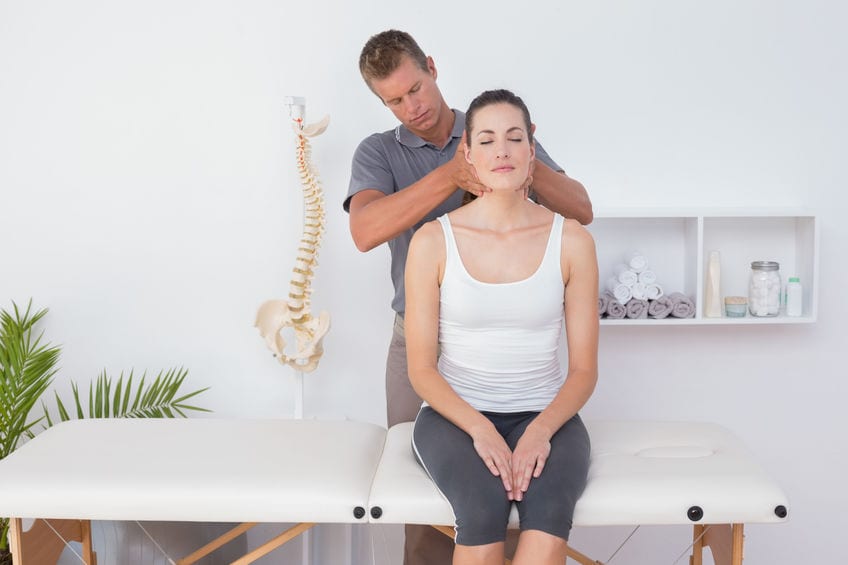PREVIOUS POST
Can a Pillow Really Help with Neck Pain?

Please fill out the form below and we will be in touch soon.

Can a Pillow Really Help with Neck Pain?

You Injured Your Back Playing Sports -- What Now?

When you think “chiropractor,” do you think “headaches?”
If you’re like a lot of people, probably not. Most people associate chiropractors with back pain or spinal cord injuries.
However, headaches are actually one of the top reasons why people go to see a chiropractor. Why? Because in many cases they can help you reduce the frequency or intensity of your headaches.
Before we dive into how a chiropractor can help you with headaches, it’s important to understand the connection between headaches and the spinal cord and muscles around the head.
Not all headaches are the same, so we’re going to start by focusing in on the most common type of headaches: tension headaches.
Tension headaches cause a dull or tight pain around the forehead or the back of the neck. These headaches are often caused by the overstretching or tension of neck and shoulder muscles.
Looking down at your cell phone, driving, or sitting at an office all day can easily cause tension and overstretching. Poor posture in general is a top cause of tension headaches and tense muscles.
The neck is located at the top of spinal cord, an area that our chiropractors understand quite well. A consultation or a few sessions of massage therapy can make a big difference in the amount of tension headaches you experience.
Spinal manipulation is rarely recommended to treat tension headaches, but chiropractors may use low-load craniocervical mobilization (a gentler form of this process) to stretch out the neck muscles or reduce pain throughout this part of the spinal cord.
Simply put, if you experience tension headaches, you have a lot of options for treatment. Improving your posture or reducing the amount of time you look down at your phone can help, for example. Our chiropractors can also make other recommendations for treatments and habits that can help eliminate your headaches and migraines altogether.
Massage therapy can also help to alleviate the pain associated with a different type of headache: migraines.
Migraines can cause very severe pain around the head and neck area, as well as sensitivity to light, nausea, and other severe symptoms. Often, people experience migraines after being exposed to various “triggers.” These triggers aren’t the same for everyone, and include certain foods, sensory stimuli, and stress. Muscle tension and back pain may also contribute to overall stress, leading to more severe or frequent migraines.
Like tension headaches, massage therapy can help to reduce the frequency of migraines. Chiropractors can also help patients reduce exposure to their triggers through exercise routines, dietary changes, and other professional advice.
We have yet to talk about the benefits of spinal manipulation (also known as chiropractic manipulation therapy) when it comes to headaches. While the jury is still out on whether spinal manipulation alone can treat tension headaches and migraines, researchers have been able to find solid connections between spinal manipulation and the treatment of cervicogenic headaches.
What are those?
Cervicogenic headaches are caused by an injury or spinal cord disorder. People who experience cervicogenic headaches typically have pain on one side of the head, neck, or shoulders. Joint pain, disc issues, or a reduced range of motion are often associated with these headaches.

Spinal manipulation can help to eliminate these headaches and associated symptoms.
Headaches can be tricky to diagnose, especially secondary ones like cervicogenic headaches. Keep track of your symptoms before you reach out to a chiropractor or other medical professional to get the proper diagnosis or treatment.
About the Author:
Dr. Singer has been a practicing chiropractor for more than 20 years, and USA Health & Therapy has been around since 2004. Over the course of his career, Singer has helped tens of thousands of people with all kinds of issues by using a wide variety of treatment strategies. He has extensive knowledge of chiropractic modalities, including Gonstead, Diversified, Thompson Drop Table, and Activator, and in 1997 he earned a special adjunctive Chiropractic Certification in Spinal Trauma (CCST) to better provide care for car crash victims. Dr. Singer is licensed to practice chiropractic medicine in both Florida and New York.